How To Draw A Baby In A Blanket
How to Draw Landscapes
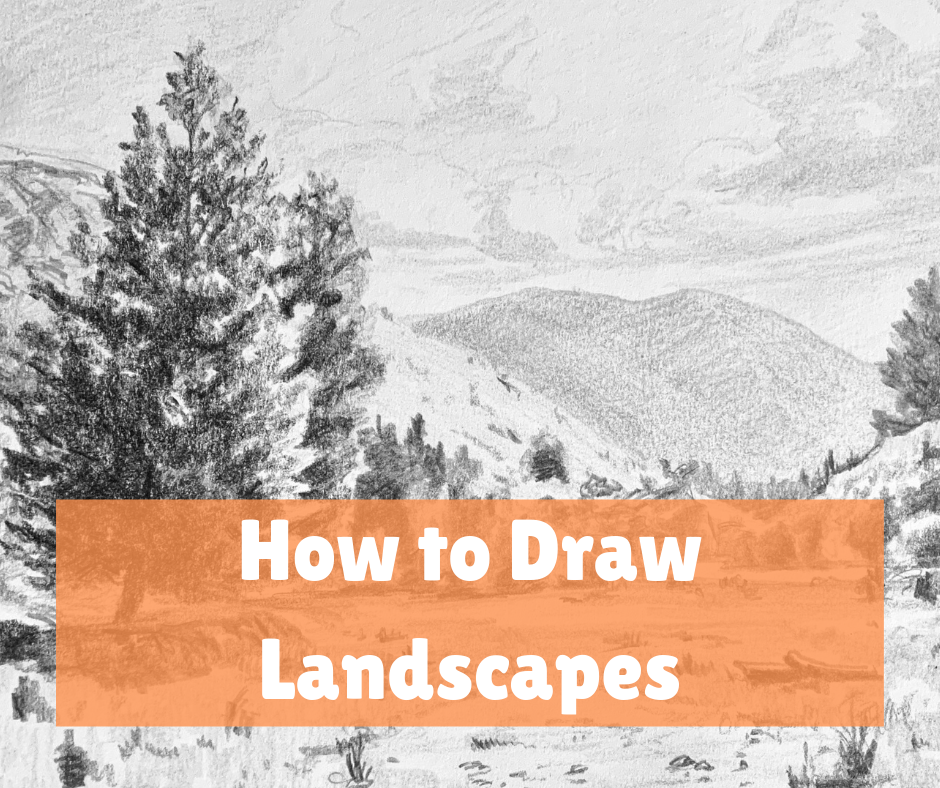
Why Sketch and Depict?
Whenever I paint a landscape I never simply get directly into information technology, I ever do some planning beginning and the planning e'er begins with my sketchbook. Just why sketch and draw, why non only start painting? Well at that place is a simple reply, if you go direct into a studio painting it'southward likely you lot'll run into trouble with the composition.
I've seen many terrible landscape paintings in art galleries (some with high price tags) considering of bad compositions due to lack of prior planning. This trouble could have been alleviated had these artists carried out some pencil sketches first to pattern their compositions.
Planning a painting in your sketchbook starting time is an important step in the painting procedure in my opinion. Y'all wouldn't beginning building a business firm with no foundations or prior plans and drawings, information technology's the same when planning a painting. Too which drawing and sketching is fun.
Getting Started With Sketching
The about obvious materials yous'll need are some pencils and a sketchbook, just there is a little more to information technology than that. I apply a range of graphite pencils to achieve light and dark tones within my drawings. I also utilize a craft pocketknife and sandpaper in order to acuminate my pencils.
Materials
Here is a list of basic materials you will demand:
-
Sketchbook (A3 is ideal)
-
Pencils (4H, 2H, HB, 2B and 4B are ideal)
-
Craft knife (for sharpening your pencils)
-
Sandpaper (for filing the graphite of your pencils)
-
Eraser
-
Ruler (optional)
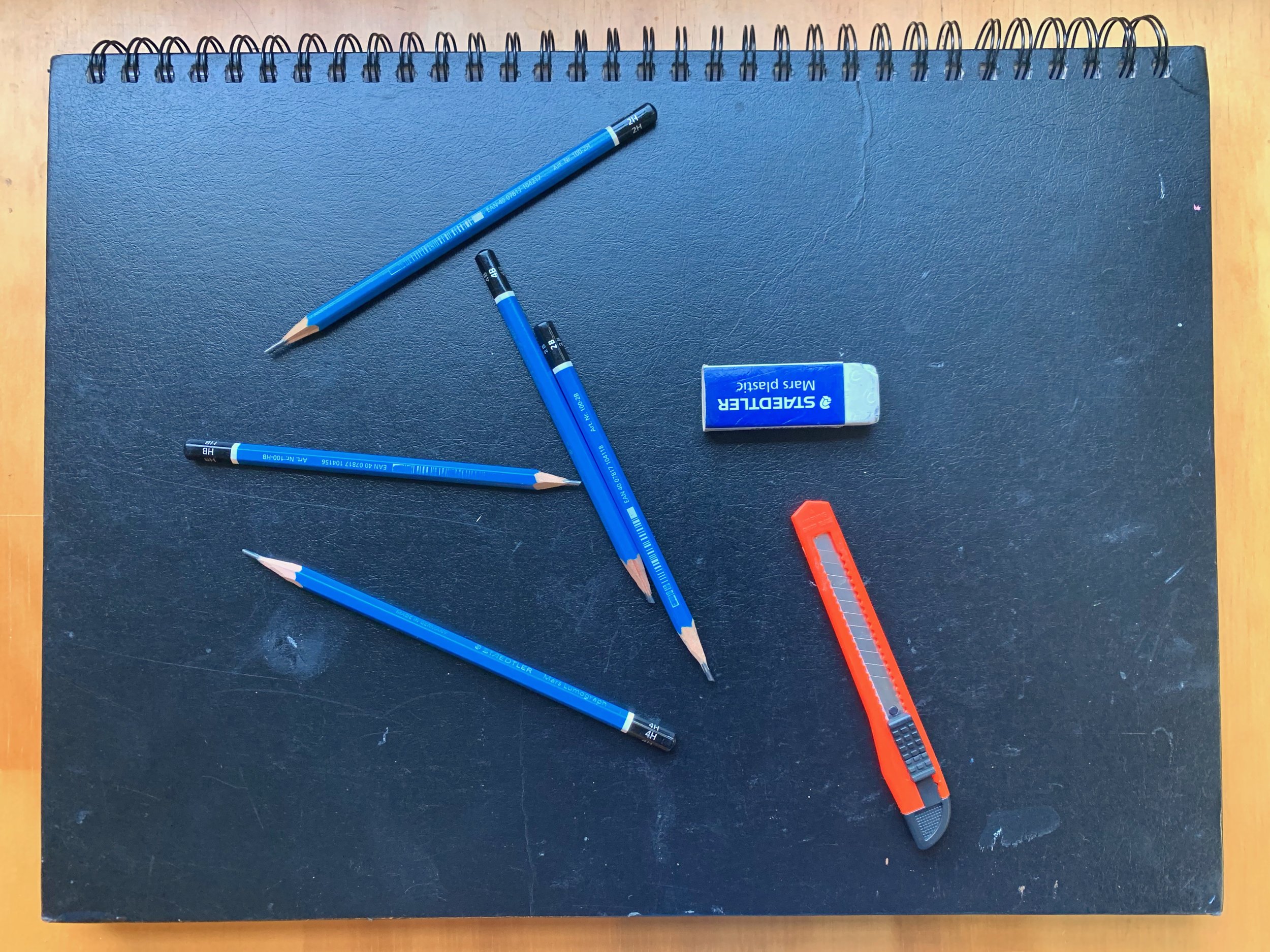
Pencil Marker Fundamentals
When it comes to using pencils in that location are many different methods to achieving successful pencil drawings just the method that I like and that works for me is the Ted Kautzky 'broad stroke' method of drawing. I learned his method from his book which I'd thoroughly recommend called 'The Ted Kautzky Pencil Book'.
I personally like this particular drawing way.
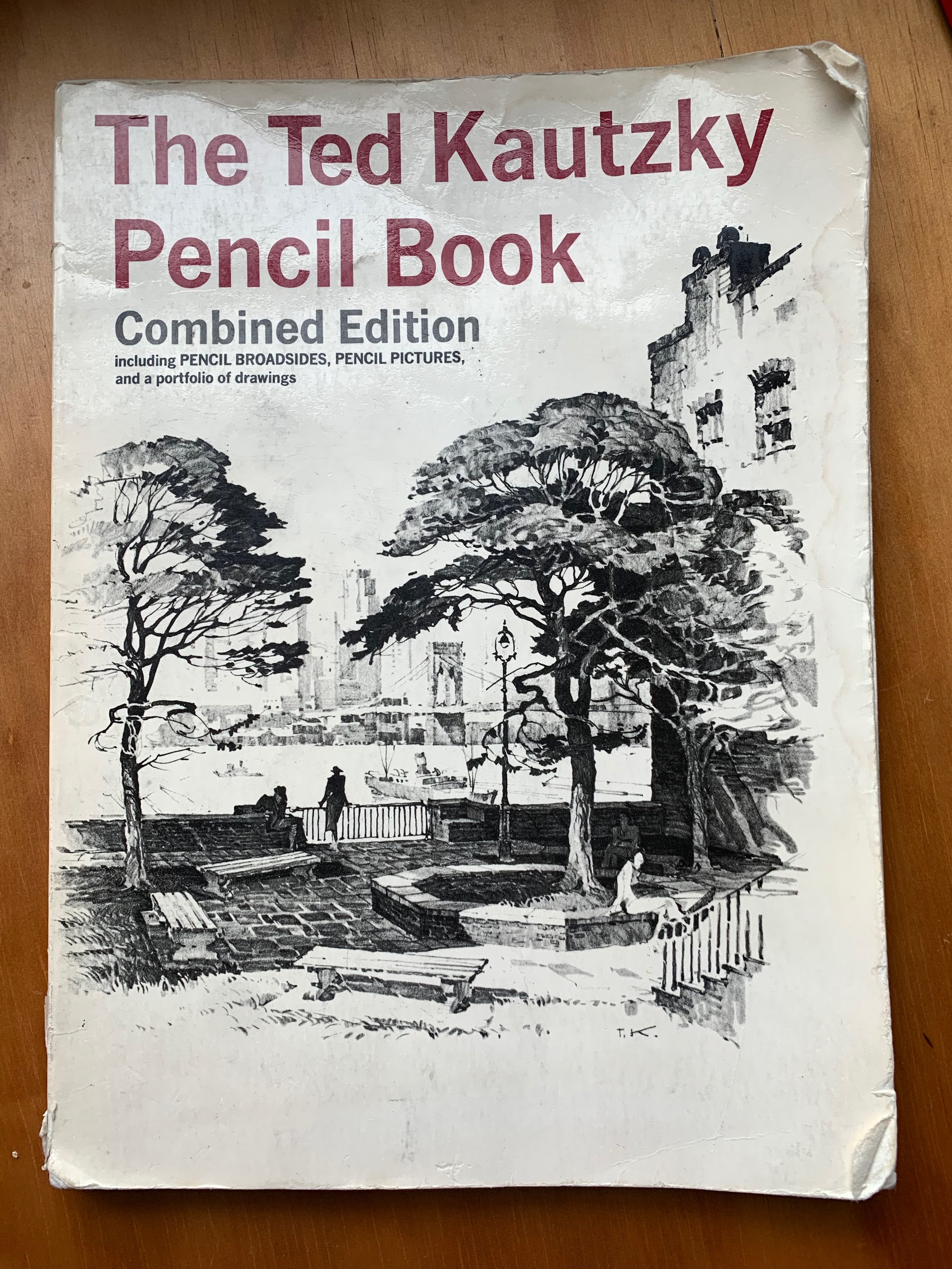
The broad stroke method allows you to create a multifariousness of compatible broad marks that are very effective at communicating realistic forms that y'all would find in landscapes. This is accomplished by sharpening your pencil and so filing the graphite (lead) at an angle to form a apartment wedge that is held evenly against the newspaper.

When sketching the pencil itself must exist held at an angle and marks fabricated evenly, not too quickly but not too slowly either. This is depicted in the image beneath.
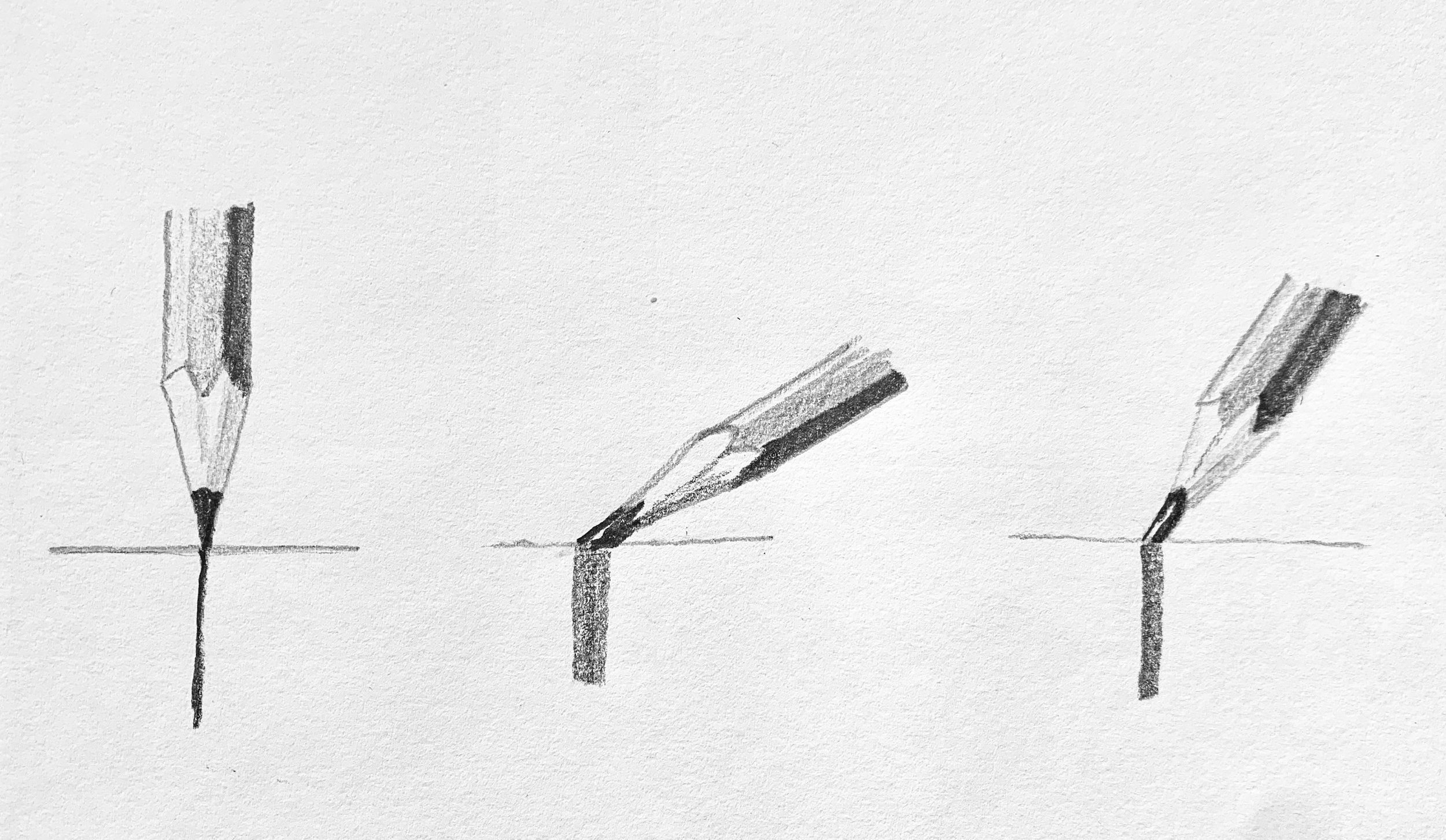
Filing your pencils at an bending to achieve wide stroke marks.
How to Sharpen Your Pencils
The pencil is start sharpened with a craft knife to leave about 1/four" of graphite exposed. This should then exist filed on some sandpaper to for a flat wedge. The broad strokes are made with the apartment side of the wedge.
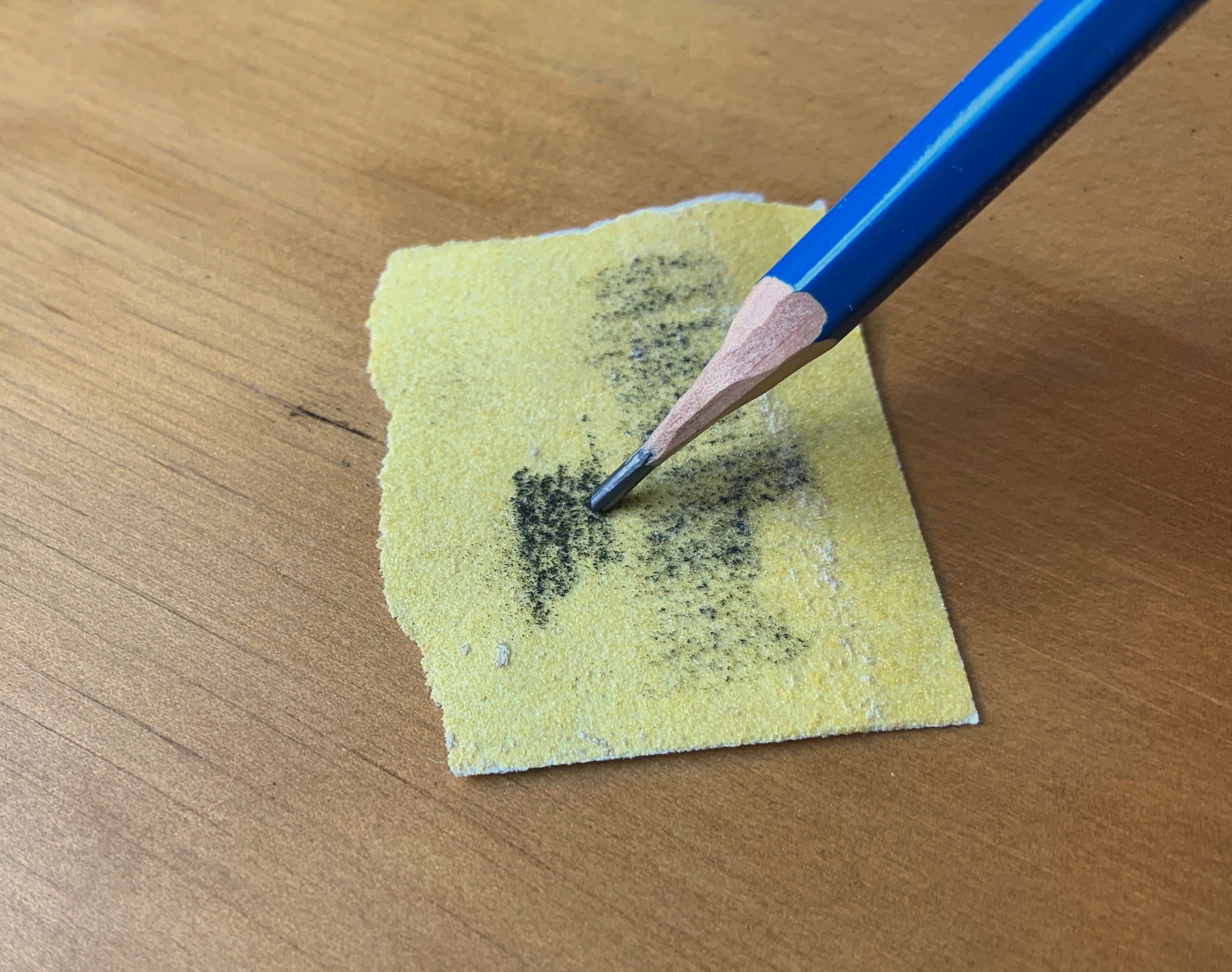
The atomic number 82 of the pencil is filed on sandpaper to form a flat wedge
Filing your pencil on the sandpaper allows yous to reach the broad stroke marks as seen in the paradigm below.

The tip of the atomic number 82 can be used for fine marks but continue in listen that filing information technology again on the sandpaper maybe needed if further broad strokes are required within the drawing or sketch.
Achieving Depth in Your Pencil Drawings
Whenever I sketch landscapes for potential paintings I e'er retrieve about the tonality of the cartoon and the relationships between light and shadow so I tin can create depth and a feeling of space inside the sketch. In society to acquit this out I employ five different graphite pencils which include 4H, 2H, HB, 2B and 4B. These pencils allow me to reach a range of tones.
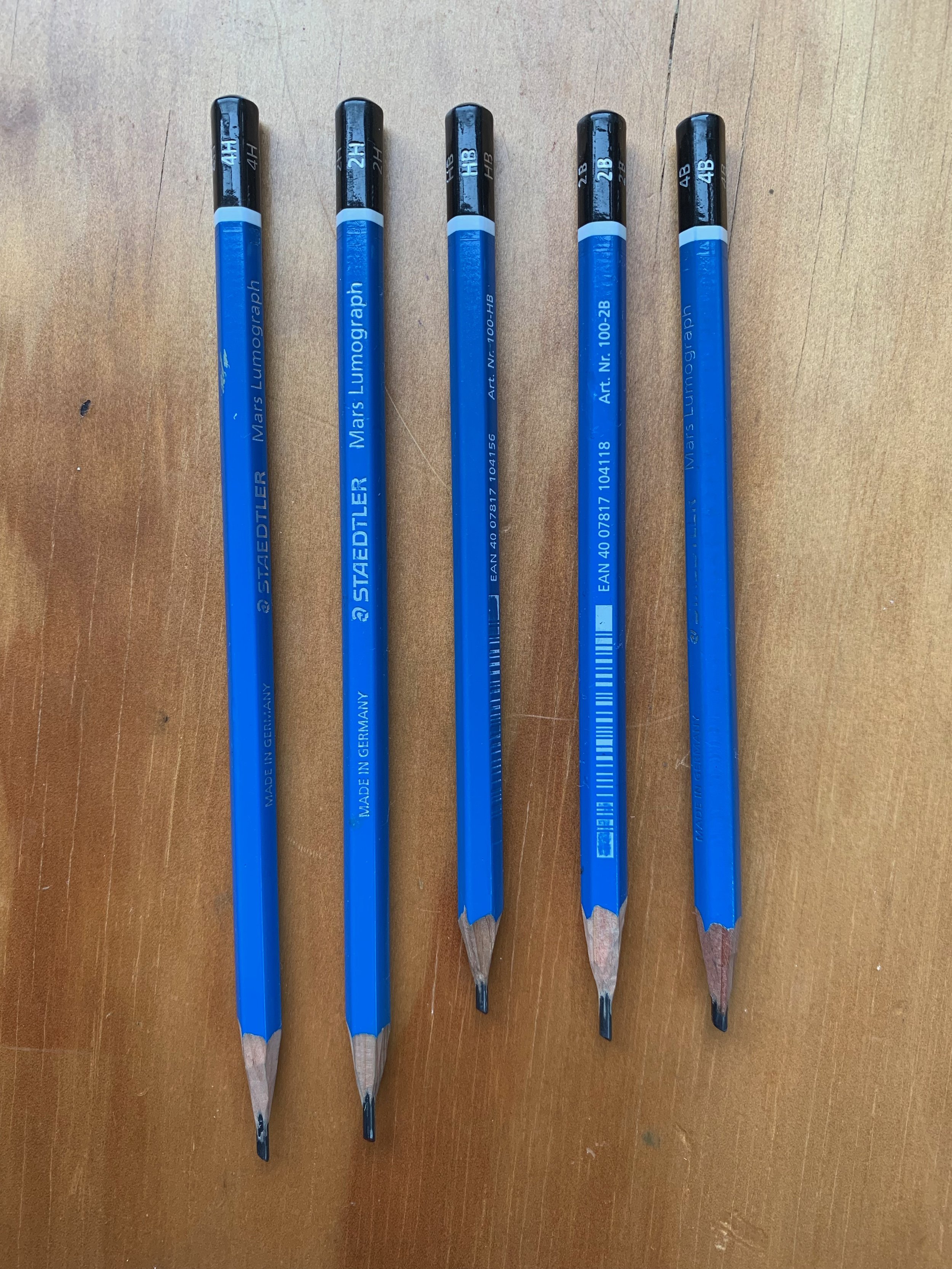
I use difficult pencils such equally 4H and 2H for afar objects as the pencil marking is tonally lighter. For dark tones and shadows I use softer pencils such as 2B and 4B. I am more likely to apply these pencils to shade in objects in the foreground where night shadows occur.

I use hard pencils to achieve the lighter values for the distant mountains. For the dark shadows in the foreground I use a soft 4B pencil.
Planning Your Composition
Whenever I plan a composition whether information technology be for a painting or for a beautifully finished pencil drawing, I always start with small thumbnail pencil sketches. These thumbnails should be quick sketches to detect out how your composition thought volition work.
Whenever I do thumbnail sketches I spend about two to three minutes on each sketch. I as well brand the sketches proportional to the size of the concluding sketch or sail I am going to work on.
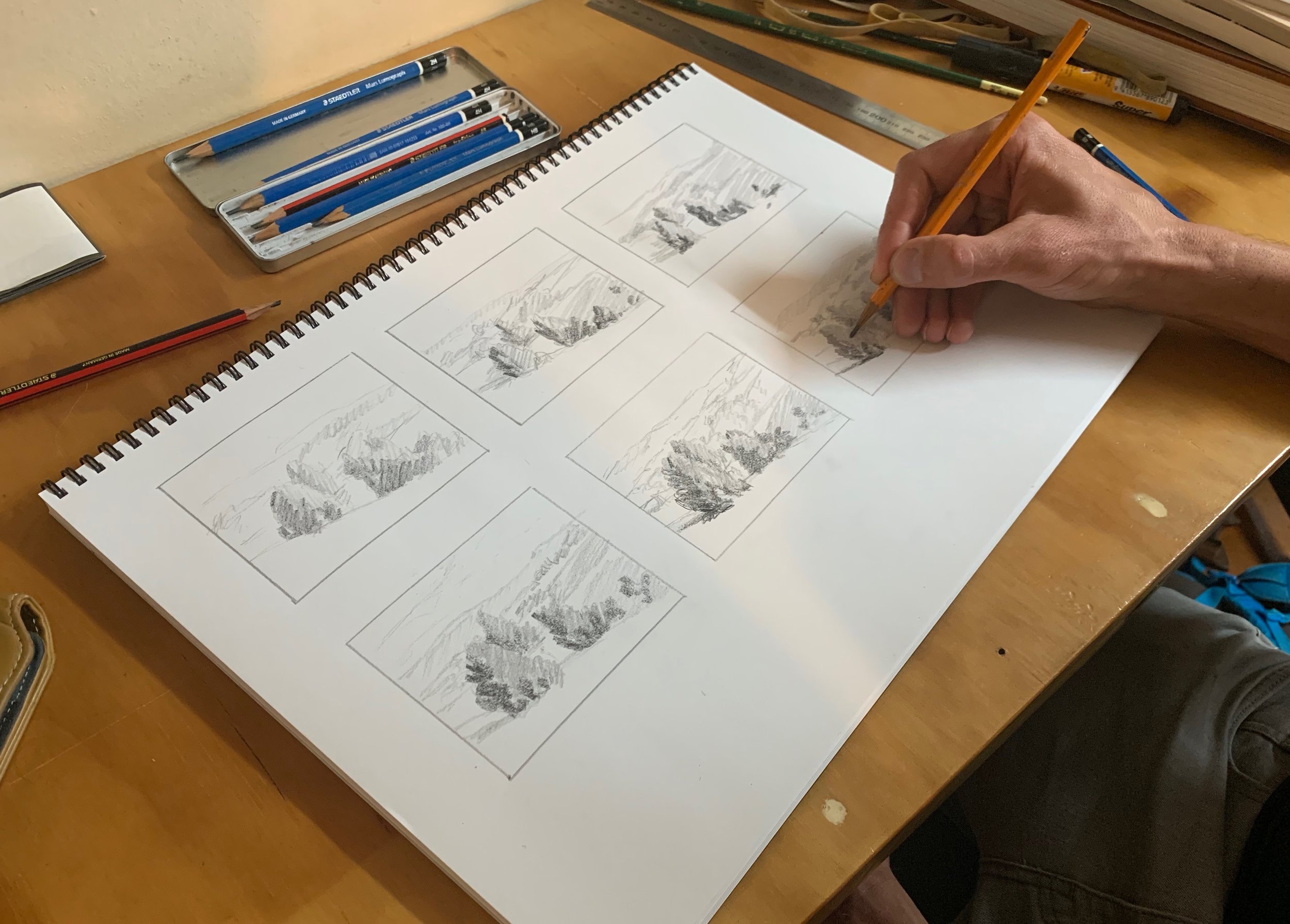
Quick two minute thumbnail sketches to plan some composition ideas.
In one case I have a skilful idea for a composition later doing a series of thumbnail sketches, I practise the final pencil sketch. I tin can and so use the pencil sketch to refer to when I starting time a painting.

Pencil Sketch and thumbnail sketches of the south declension cliffs of Guernsey.
Drawing Sit-in #ane - Rolling Hills of Northland, New Zealand
This drawing features a group of pine copse surrounded by rolling hills that are so feature of the region of Northland in northern New Zealand. It is my intention to do a studio painting of this scene.
This is i of the reference photos I have used for the pencil drawing.

Haruru, New Zealand
In my composition design I have fabricated the group of trees the focal area and I accept moved the tree closest on the left further forward in the limerick as you will see in the sit-in. I have made the grouping mass of trees bigger.
I am going to be doing a colour study of this scene start so I take fabricated my final sketch the exact aforementioned size as the linen panel I volition paint on, which measures viii" ten 10".
I sketch out the design faintly with a 4H pencil. Once I am happy with the proportions I can use the broad stroke pencil method to shade in the various zones inside the scene.
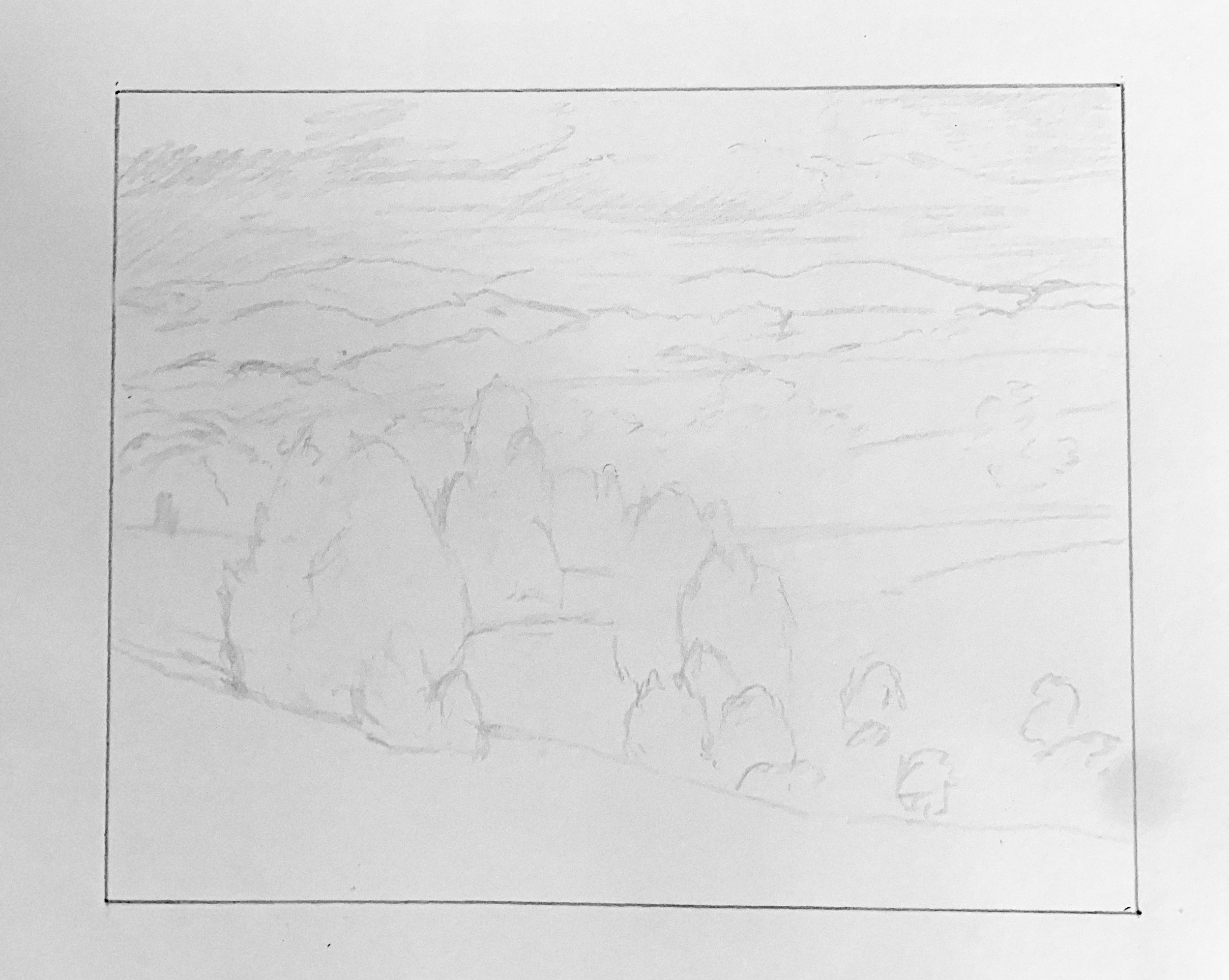
Now that I am happy with the sketch outline I showtime shading in the darkest values within the scene. I outset with the afar trees which are a mid-tone so I employ a 2H pencil which produces a light mark.
For the trees in the mid-ground I use a HB pencil as the value is darker than the copse in the distance. The HB pencil produces a darker marker than the 2H pencil.
The shadows in the pines trees in the foreground take the darkest values in the scene and for this I use a 4B pencil. The graphite is soft and information technology produces a nighttime marker. The darkest shadows will be found in the foreground of the landscape and and then in order to communicate depth in the cartoon this must be taken into account.
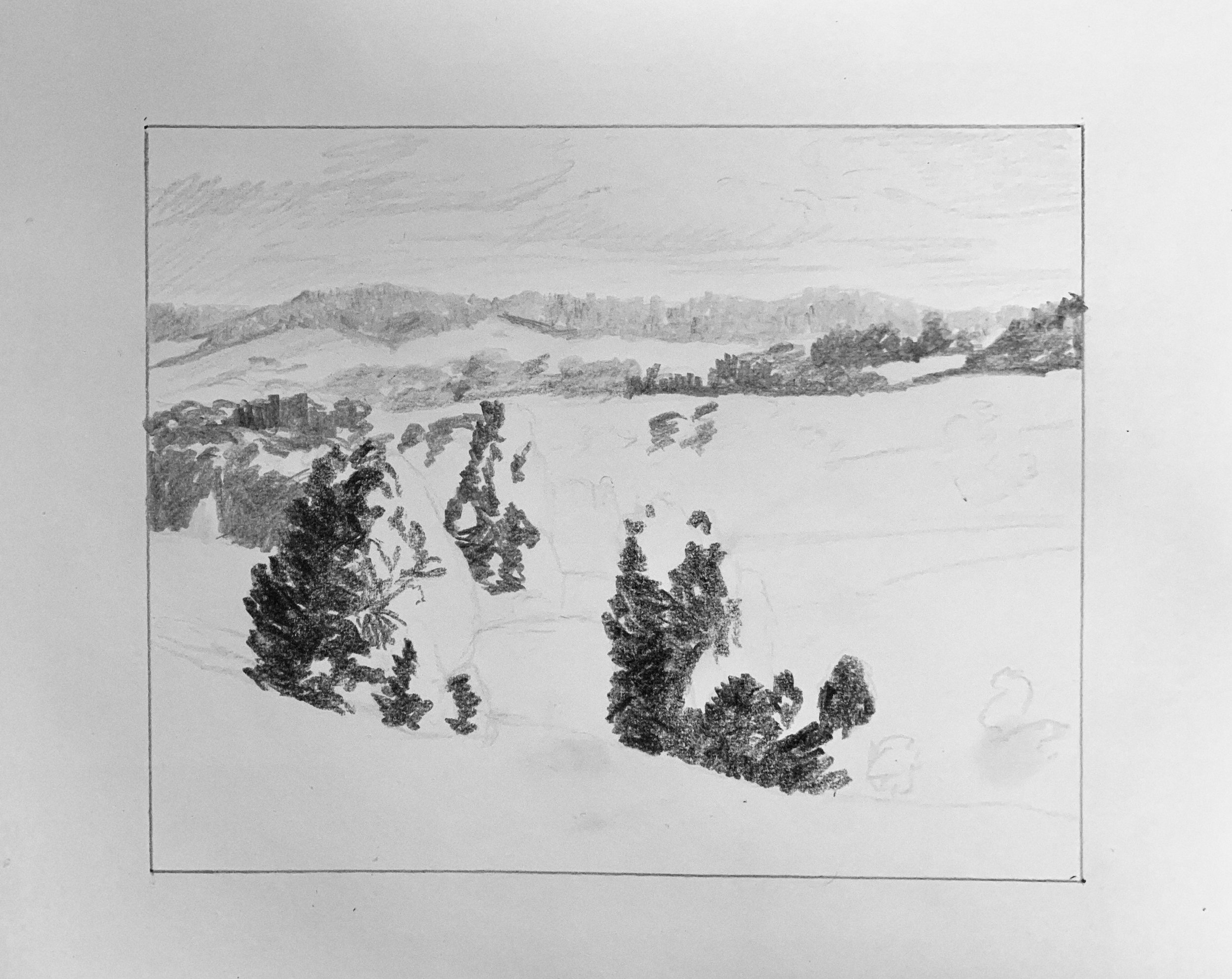
Annotation the wide stroke marks are excellent for depicting pine tree leafage.
I utilise an HB pencil for most of this cartoon especially for the trees and grass in the mid-ground.
I use 2H pencil for the pine tree foliage thats in total sun every bit pine trees are generally tonally dark and in this case are the darkest values within the landscape.
As grass is calorie-free in value I get out the grass with the white paper exposed, however I add a few suggestions of clumps of grass. I employ a 4H pencil to lightly shade in the grass in the distant hills equally well equally the base of the clouds.
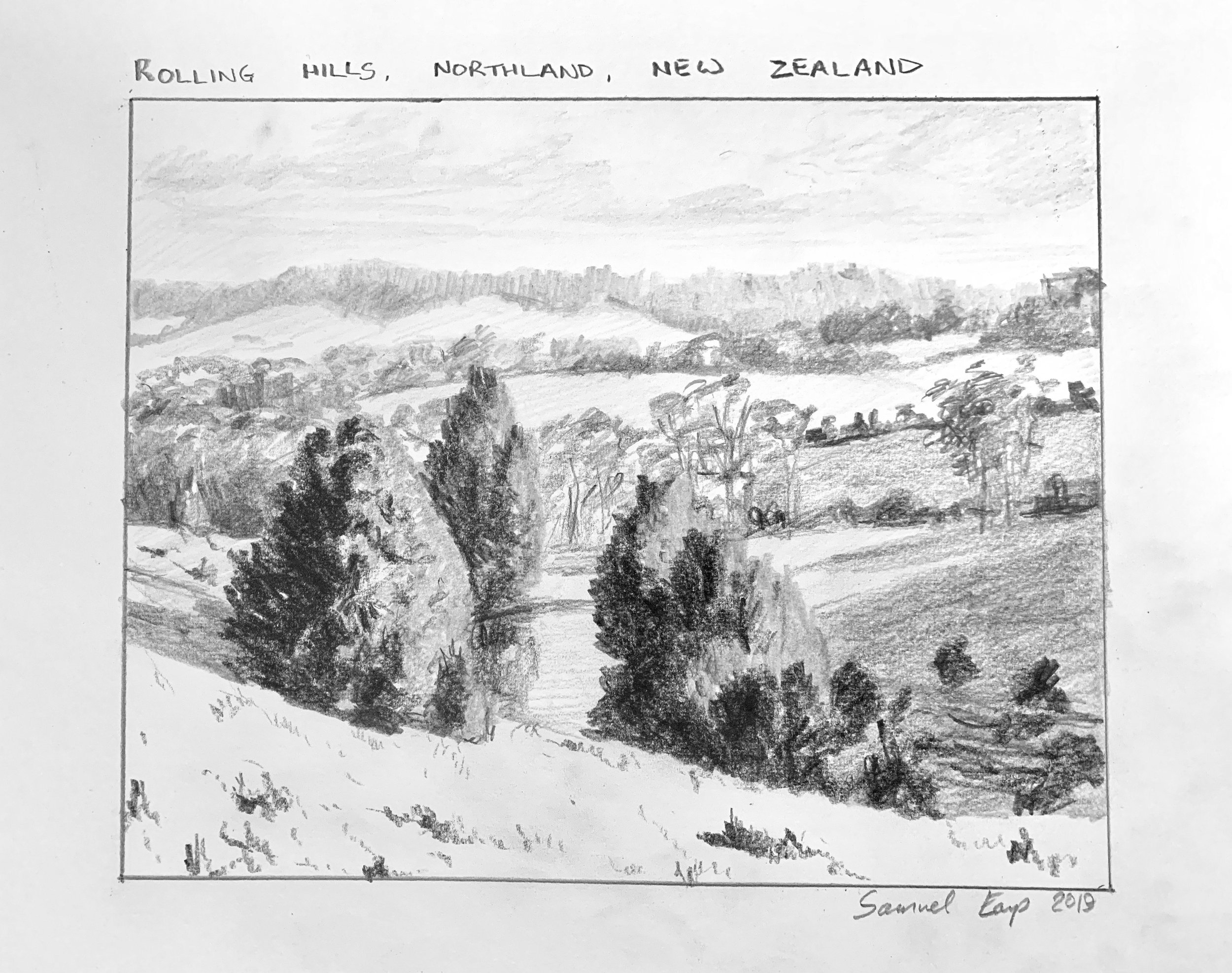
Cartoon Demonstration #2 - Shotover River, Queenstown, New Zealand
This drawing features a mountain river valley surrounded by broadleaf trees. One of the reference photos I am using (seen below) depicts by hazard a naturally pleasing composition so didn't need to modify information technology as well much when I was designing the cartoon.
Again I will use this drawing as reference for a colour written report and so a last studio painting.

Tucker Beach, Shotover River, Queenstown, New Zealand.
In this composition I have incorporated a design called a 'steelyard' limerick where the copse on the left constitute a large weight in the scene that is counterbalanced on a theoretical fulcrum by the smaller pine trees in the mid-ground on the correct.
For more than information on landscape limerick designs including the steelyard limerick check out my weblog post on '5 Composition Ideas for Mural Paintings'
As with the Rolling Hills, Northland drawing, I faintly sketch of the composition with a 4H pencil. This is a hard pencil and and so it produces a lite mark.
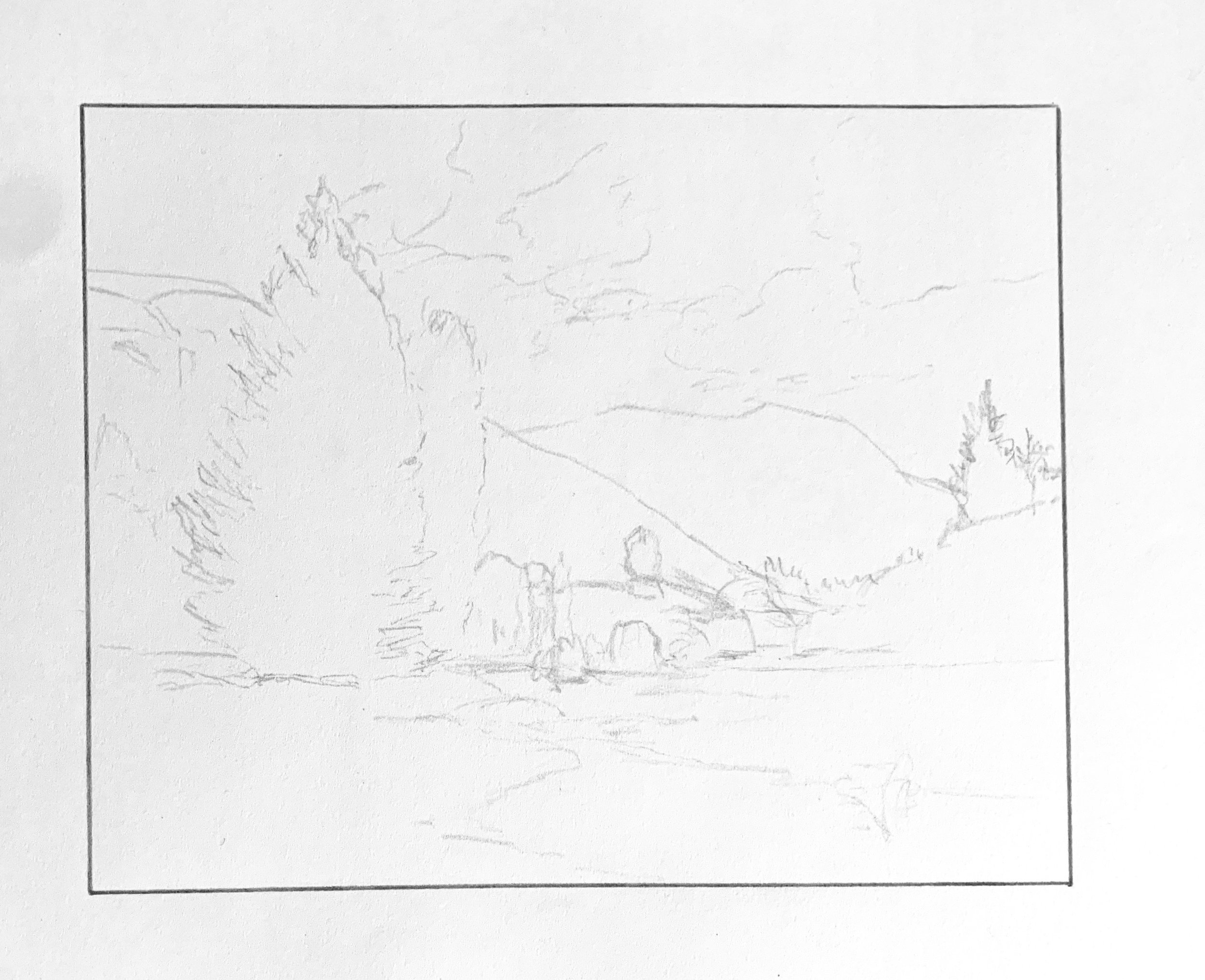
Before I start shading in the drawing I make up one's mind where my night values are. They are to exist constitute in the cloud shadows, the afar mountain, the shadows in the mid-footing copse and the trees in the foreground.
I employ a 4H pencil to draw and shade the clouds and a 2H pencil for the distant mount.
I use a HB pencil for the mid-ground trees and use a 4B pencil for the shadows of the trees in the foreground.
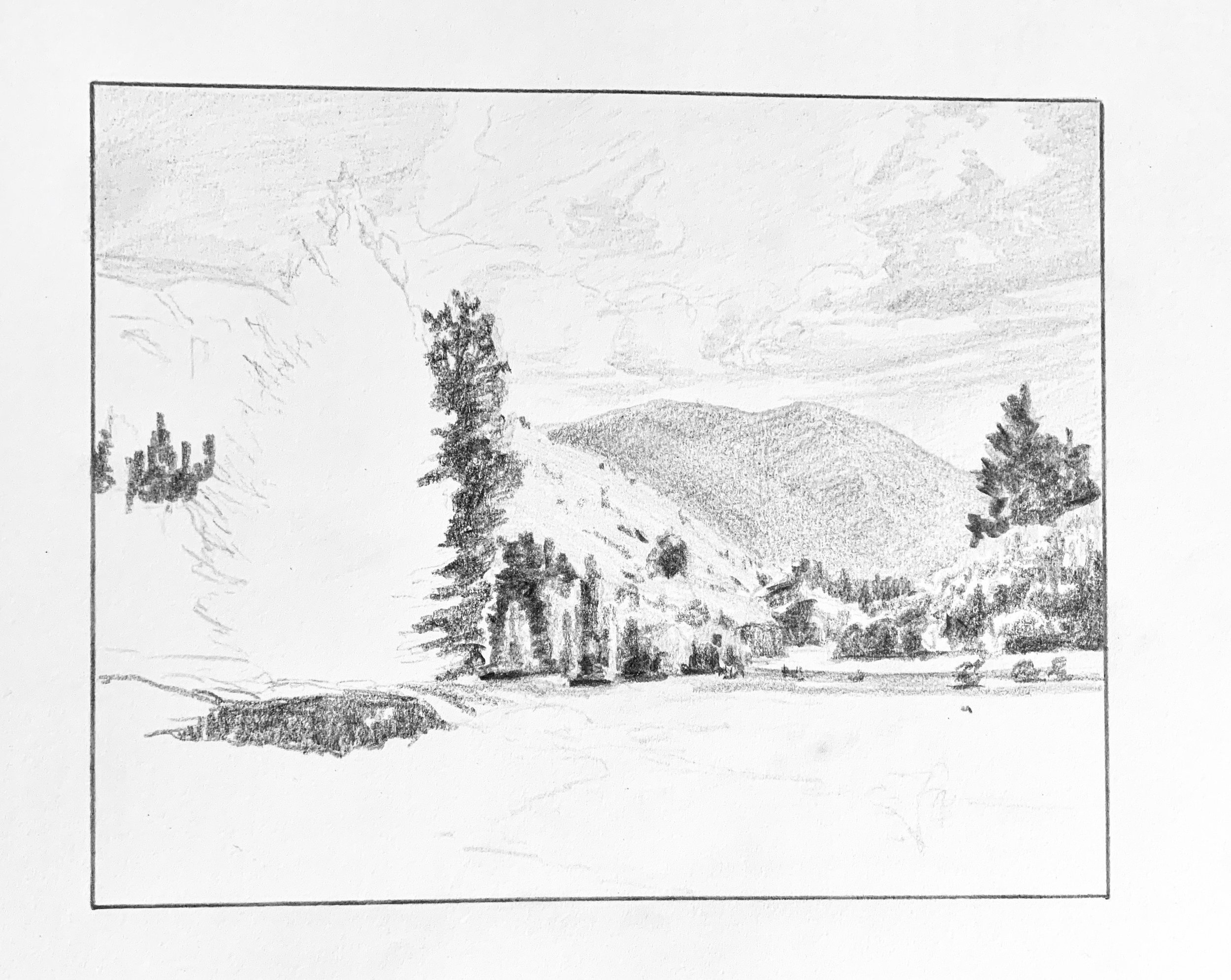
I finish the cartoon by shading in the prominent shadow within the poplar tree in the foreground. This is the darkest value in the drawing and so I utilize a 4B pencil.
The grass is light in value so I use a 4H pencil, I also employ a 4H for the foliage that is in light within the foreground trees.
With a 4B pencil I add in a few final details such as the suggestion of clumps of grass and bits of wood.

Thanks for reading 😊
If you enjoyed this blog mail service you may like some of my others. Check out these weblog posts:
References
Ted Kautzky, 1979. The Ted Kautzky Pencil Book. Van Nostrand Reinhold Company.
Edgar Payne, 1941. Composition of Outdoor Painting. DeRu's Fine Arts.
Source: https://www.samuelearp.com/new-blog/2019/7/27/how-to-draw-landscapes
Posted by: holcombwhopribed.blogspot.com












0 Response to "How To Draw A Baby In A Blanket"
Post a Comment